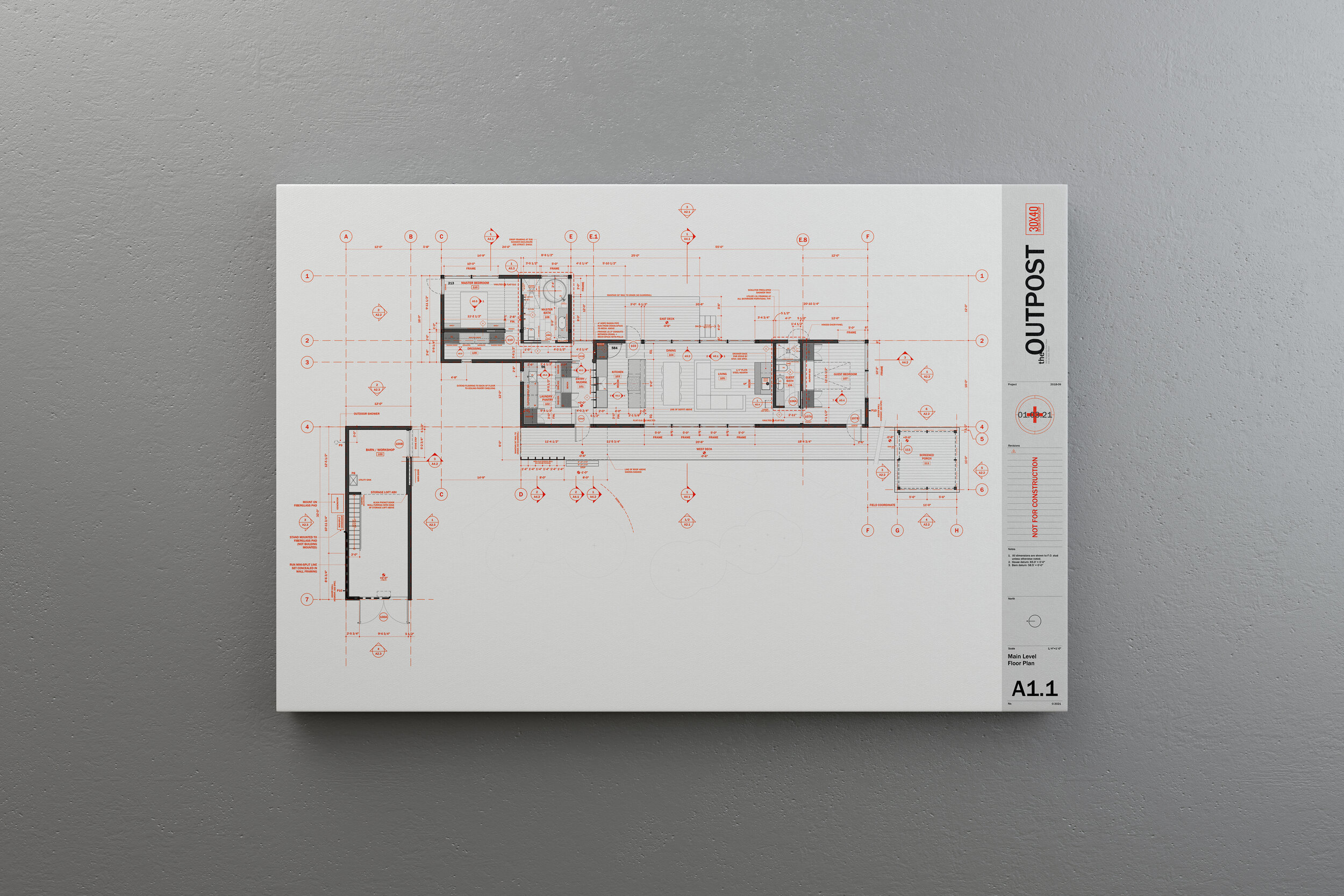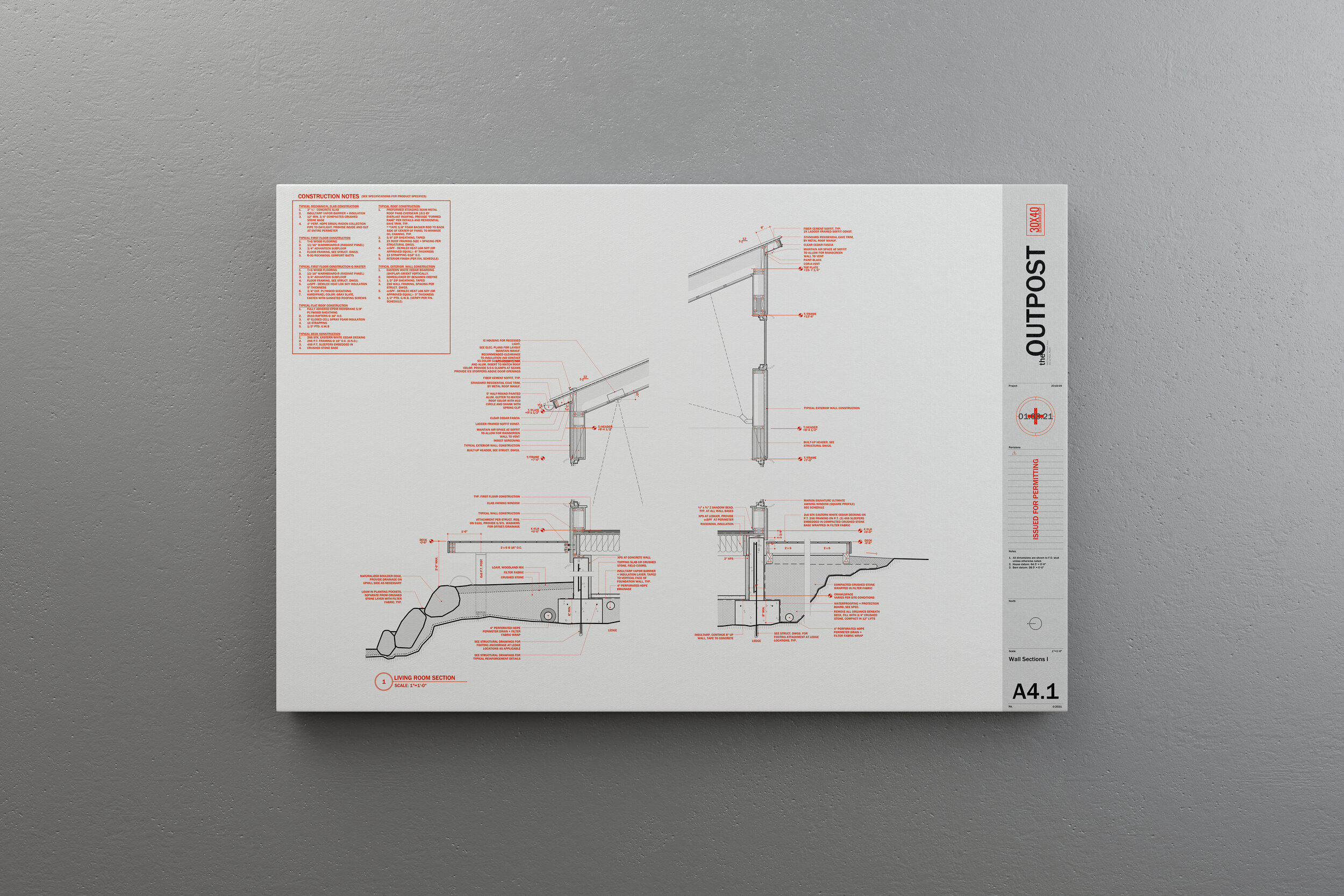Watch and follow along as I draw a floor plan for a new residential project in AutoCAD. See the settings, lineweights, and graphic conventions I use to make my drawings beautiful and readable.
Read MoreWhat's in a typical custom architectural plan set?
All architectural drawings are representations - abstractions - of what we intend to build. The two lines that make up the wall segments drawn on a floor plan aren’t enough to describe what the wall should be constructed with. So we rely on three main devices to convey that information: drawings, schedules and specifications. Together these documents organize and catalog all the decisions necessary to build our project in a very precise way. In this video, you’ll see everything I include in a typical set of custom documents from start to finish.
By any account, this is a lot of information to include. Consider this though: anything we don't delineate, anything that's not called out in the construction documents is a decision we’re choosing to defer to someone else to make, whether that's during pricing or in the field during construction. In general, I prefer to control and direct as many design decisions as possible, so I choose to draw and call out as much as I can in the studio where making changes is relatively inexpensive as compared with on-site where every move comes at great expense.
Creating "a tight set of documents" means we’ve taken the time to document the full range of decisions required to construct the project as designed. A tight set of documents will answer every question that arises along the way, from pricing through construction. Importantly, we don’t leave things to chance, we use our set to describe very specifically the design decisions we've made with our client prior to construction. The value of this is that it helps our clients feel confident that what’s been decided during the design process will be realized in the final home, it protects the architect as the author of the design against unwelcome surprises in the field, it helps the general contractor and the sub-trades to accurately price the project and ultimately to stay on budget and on-schedule as we're building because everyone knows what's expected.
More resources:
Lighting Design + Drawing Tutorial - My Process
We can build a home from a set of five drawings or a set of fifty, one provides a lot more control over the finished product. Whether your plan set is five or fifty, one of the must-have drawings is an electrical plan. Follow along in this video as I design + draw the architectural lighting plan for the Outpost project. An electrical plan is an essential drawing in every architect’s toolbox, it shows the fixture types, switching, receptacle locations, all the necessary electrical devices + equipment we need to plan for in our architecture. Designing it in coordination with the other essential building systems: architectural, structural, mechanical and plumbing affords us optimal control over the design.
Hidden elements in a project - beams, ductwork, vent stacks - can adversely impact the placement of the visible elements - light fixtures, for example - which is why we plan for them early in the design process. Drawing and overlaying each helps us to identify conflicts in the studio and on paper where it's much more efficient and cost-effective to make changes. See how the abstract concepts of ambient, task + accent lighting are accounted for and applied in the design of the Outpost, a remote, off-the-grid residential project here in Maine.
Resources:
Learning to Sketch
I spend most of my day in a digital work environment and I’ll often find myself tweaking the smallest of details just because I can. Digital space is without limitation, yet creativity thrives on constraints. It’s the boundaries that we’re forced to work within that shape our work. There’s no question digital tools are an integral part of how we realize our architecture today and in the 25 years I’ve been practicing, those tools have changed and improved the way I work significantly. Digital tools are for executing ideas. I turn to my favorite analog tools - pencil + paper - to birth those ideas.
Sketching is thinking. Sketching is seeing. Sketching is learning. With pencil in hand, I’m a child. I think that’s part of the magic of learning to sketch, it allows me to see problems with a child’s mind, the mind of an amateur.
I designed the BLANK sketchbook because I know how transformative establishing a sketching habit can be. Buying a pair helps to support my educational mission on YouTube.
With gratitude
/Eric @30X40
An Incredible Resource for Architectural Inspiration
With more than 581,000+ architectural drawings, photos, and documents to download and use as you please, I couldn't keep this incredible resource to myself any longer. The HABS (Historical American Buildings Survey) along with HAER (engineering), and HALS (landscape) are a collection of building surveys from the American architectural, engineering, building and landscape culture maintained by the Library of Congress in Washington, DC. In this video, you’ll peek in the collection and see how I use it in my architecture practice.
The program was born in the 1930's during the Great Depression as a means to put unemployed architects to work with a mission to preserve and document the architectural heritage of America. Since then, the archive has catalogued more than 43,000 individual structures and more are added each year.
I use it for: creative inspiration, precedent research, to improve my architectural drawing, graphics and delineation techniques, and to study details from some of America's most famous works of architecture.
If you enjoy these videos, you can support 30X40’s work on YouTube by investing in a course, a toolkit or a digital tool. Many thanks!
Day in the Life - An Architecture Vlog
Follow a typical day in the life of an architect. Part architecture vlog, part behind-the-scenes look at some of the tasks architects work on each day: from designing a set of elevations to managing projects in construction, to writing specifications, to managing an office, and how to deal with the inevitable creative blocks creatives face on a daily basis.
I intentionally structure my day to be divided between making in the morning and managing in the afternoons, with a mid-day transition break for exercise. Learn why this works for me and follow along as I work through some of the most common struggles an architect faces in daily professional practice.
For aspiring architects, architecture students, and those curious about exactly what it is that architects do each day.
Featured gear in this episode:
DRONE: *Mavic Pro by DJI:
DSLR: * Canon 6DMKII
LENS: *Canon 24-70mm f2.8L
MIC: *Rode VideoMic Pro
MARKERS *Copic Markers
CAD *AutoCAD LT
3D Visualization * SketchUp PRO
PLOTTER: *HPT120
DOCUMENTS *A+E Startup Toolkit
No Longer (Just) An Architect
An excerpt from a conversation I had with Maleick, a 22-year old architecture student from Baltimore. He’s preparing to graduate architecture school this spring, making plans, weighing his options and struggling with the anxiety of not knowing what’s next.
Twenty-two years ago, I stood where Maleick stands today, entering the profession with the same concerns, the same worries. And today - twenty-two years later - I’m no longer an architect. Yes, I have the degree and the license and buildings I’ve designed, but the profession I stepped into back then no longer exists. There are no more architects in the singular sense of the word. Today I’m a photographer, a graphic designer, a marketer, a filmmaker, a writer, a negotiator, an editor, a curator, and a creator. Professional practice is anything and everything we design it to be.
Approaching practice with a creator's mindset has allowed me to explore a spectrum of influences and interests and incorporate those into my work as an architect. In much the same way, my architectural training informs and colors my other creative pursuits.
The uncertainty remains though as a part of life. What do you think? Did I get it right? What advice would you offer a soon-to-be graduate?
Drawing Like an Architect
In this video I share my essential tips for better architectural drawings. It's easy to forget that architectural delineation is part of our craft and - I believe - beautiful drawings communicate more clearly.
Important concepts discussed:
- Lineweight (and the pens I use: http://thirtybyforty.com/sign-pen )
- Atmospheric perspective
- Drawing technique
- Tracing paper (my favorite: http://thirtybyforty.com/trace )
- Corners
- Iteration
- Foreground, middle-ground, and background
- The 'squint' test
- Shade + shadow
- Entourage






